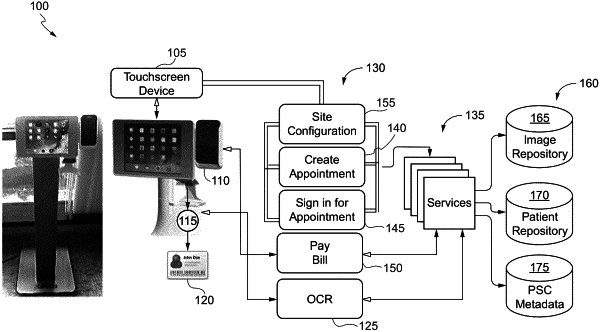| CPC G16H 40/20 (2018.01) [G06N 3/08 (2013.01); G06Q 10/1095 (2013.01); G06Q 40/08 (2013.01); G06V 10/22 (2022.01); G06V 10/454 (2022.01); G06V 10/82 (2022.01); G06V 30/19173 (2022.01); G06V 30/416 (2022.01); G06V 10/243 (2022.01); G06V 10/30 (2022.01); G06V 10/32 (2022.01)] | 20 Claims |

|
1. A computer-implemented method comprising:
obtaining a set of training input image elements, wherein each of the training input image elements includes a digital image depicting an identifier, each of the training input image elements is associated with one or more labels that identify an interpretation of a first piece of information, a second piece of information, or both from the identifier, and the first piece of information is different from the second piece of information;
training a multi-task convolutional neural network architecture using the set of training input image elements, wherein the training comprises:
extracting, by a first machine-learning model in the multi-task convolutional neural network architecture, a first set of features from the set of training input image elements for the first piece of information on the identifier, wherein the first set of features are specific to a first task of classifying the identifier;
extracting, by a second machine-learning model in the multi-task convolutional neural network architecture, a second set of features from the set of training input image elements for the second piece of information on the identifier, wherein the second set of features are specific to a second task of predicting a location of the second piece of information on the identifier;
classifying, by the multi-task convolutional neural network architecture, the identifier based on the first set of features and the second set of features;
predicting, by the multi-task convolutional neural network architecture, the location of the second piece of information on the identifier based on the first set of features and the second set of features;
optimizing parameters of the first machine-learning model based on the classification of the identifier and the one or more labels that identify the interpretation of the first piece of information; and
optimizing parameters of the second machine-learning model based on the prediction of the location and the one or more labels that identify the interpretation of the second piece of information; and
providing the multi-task convolutional neural network architecture comprising the first machine-learning model and the second machine-learning model.
|